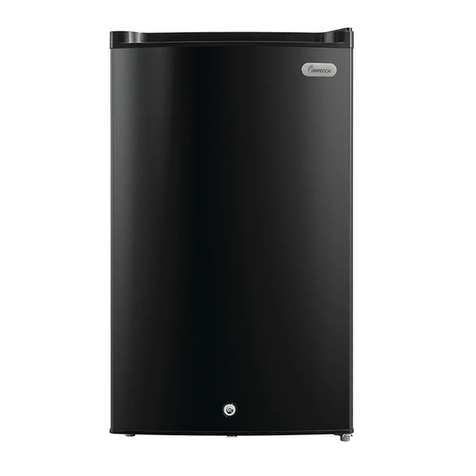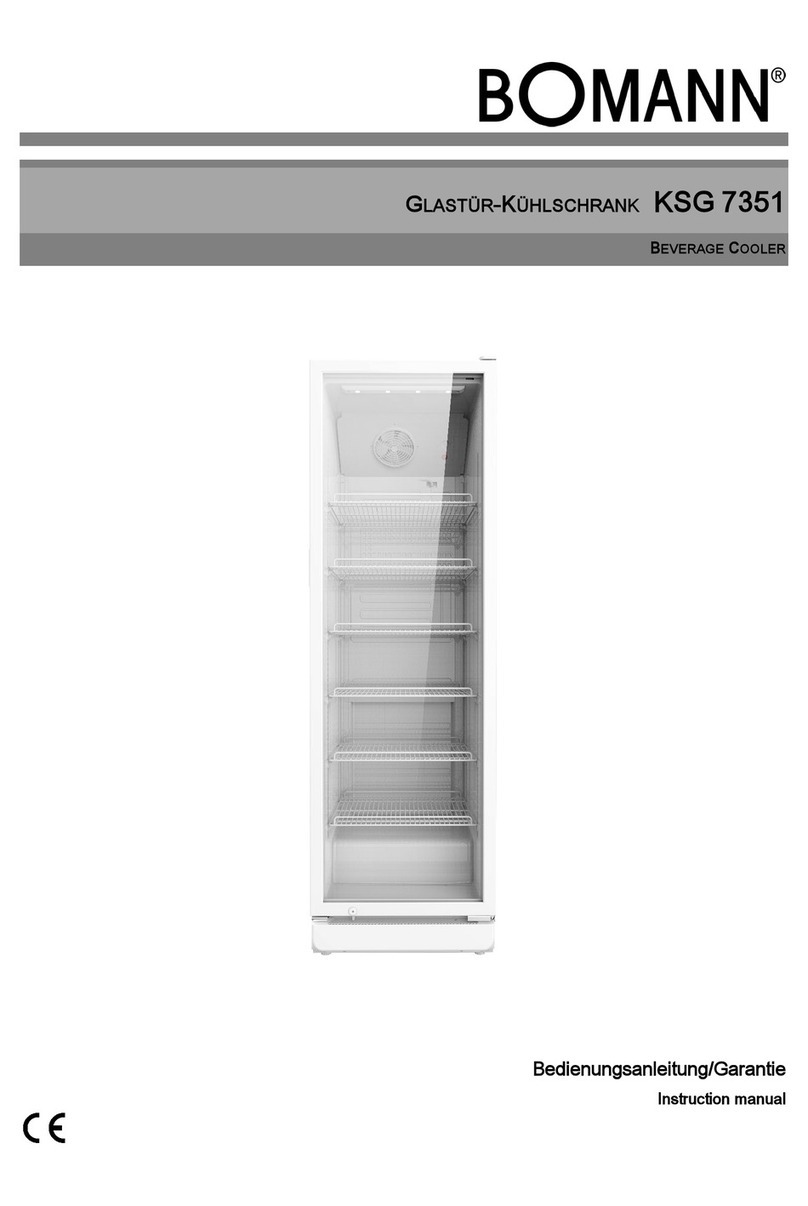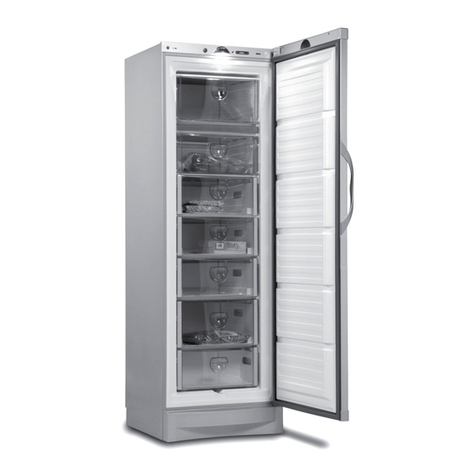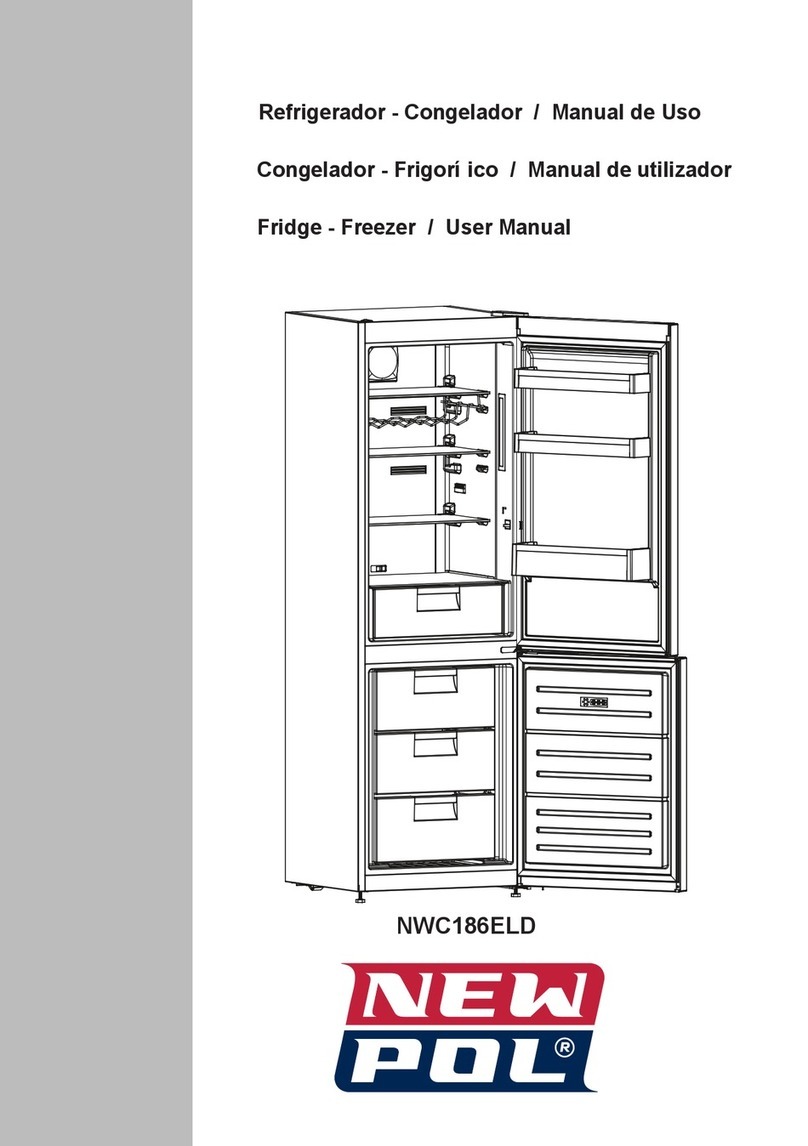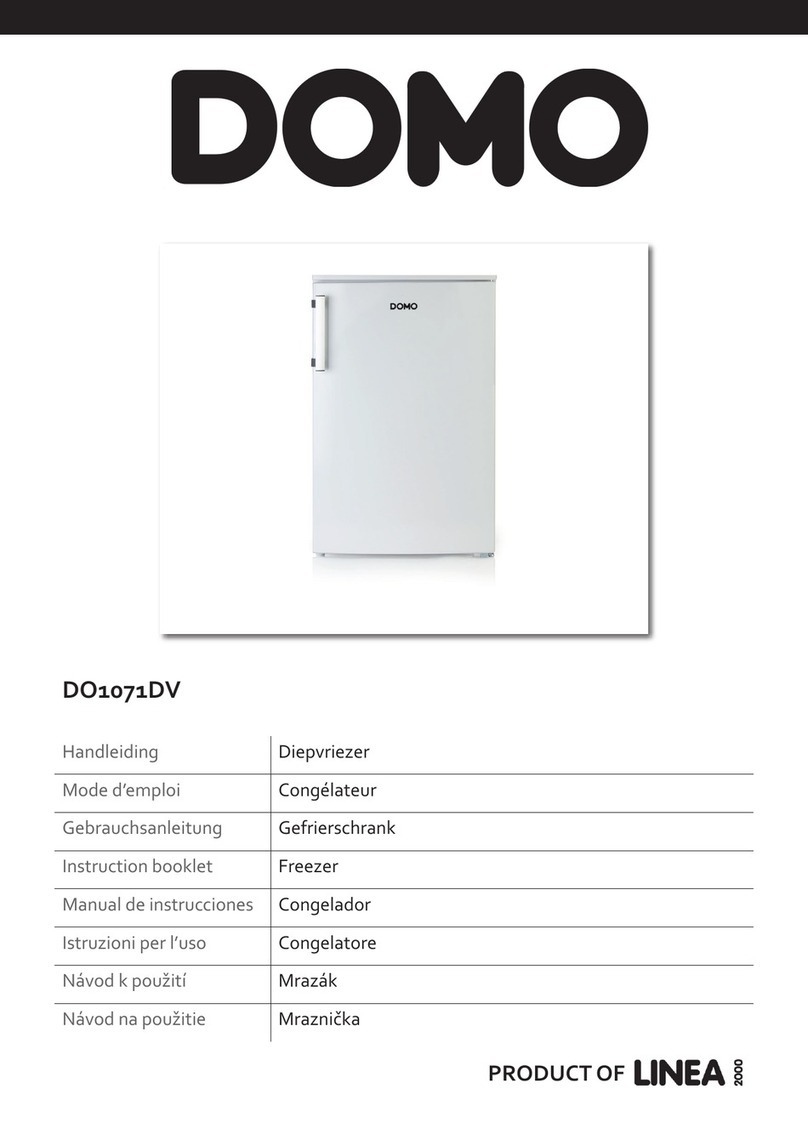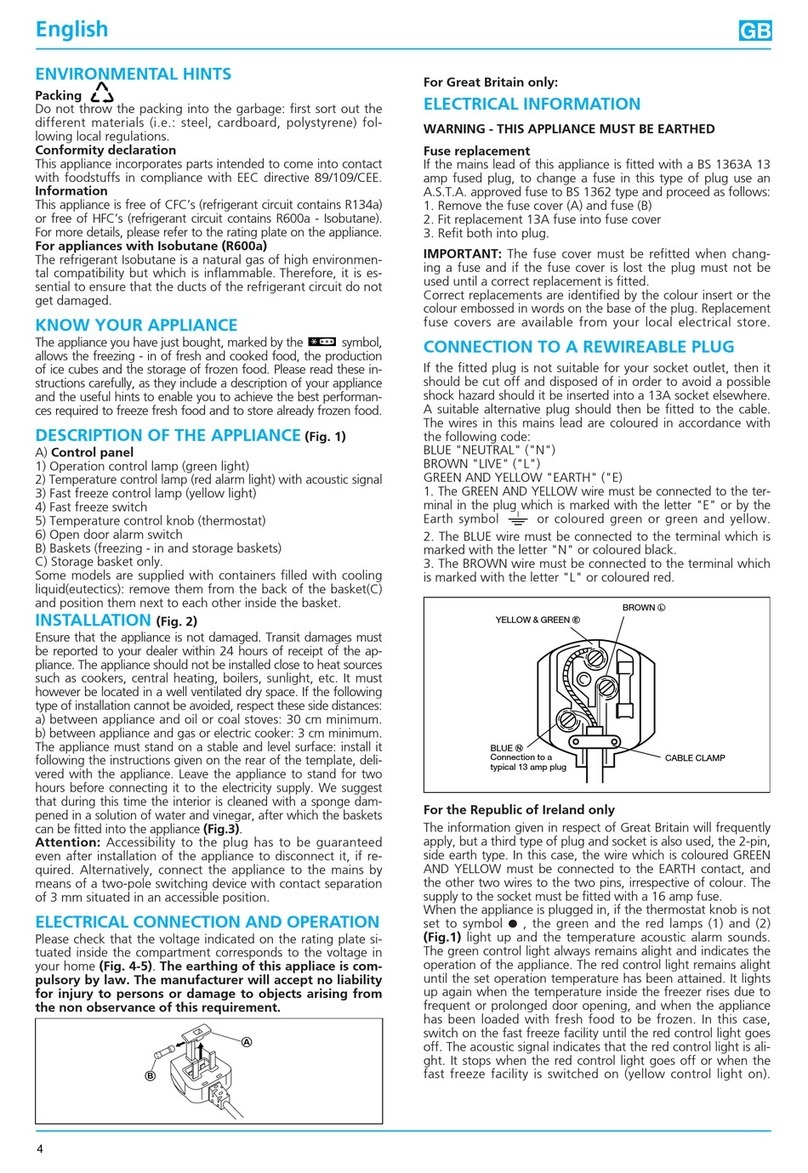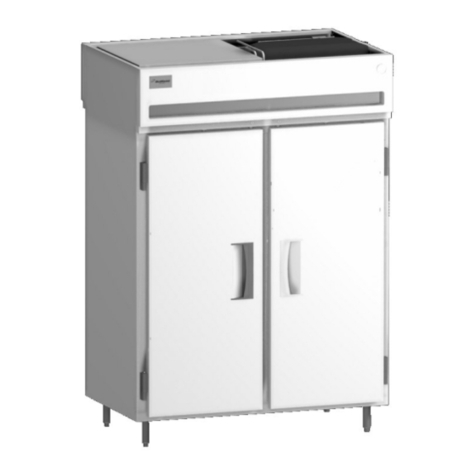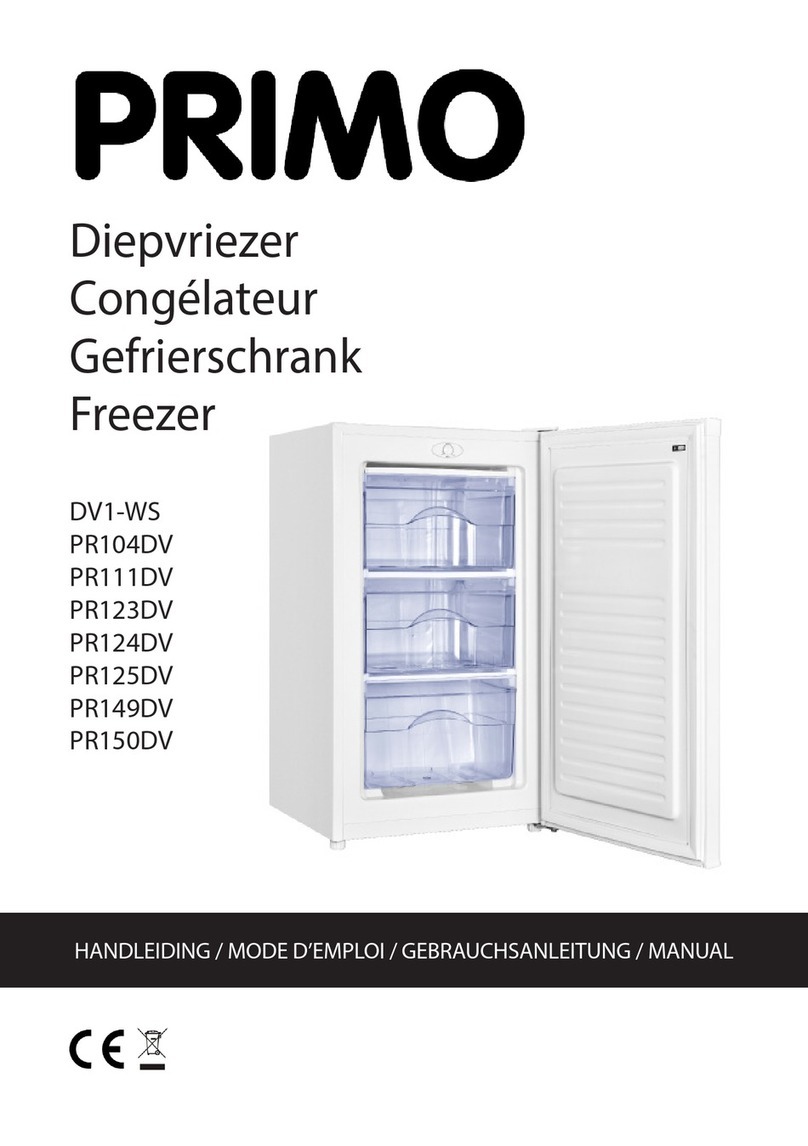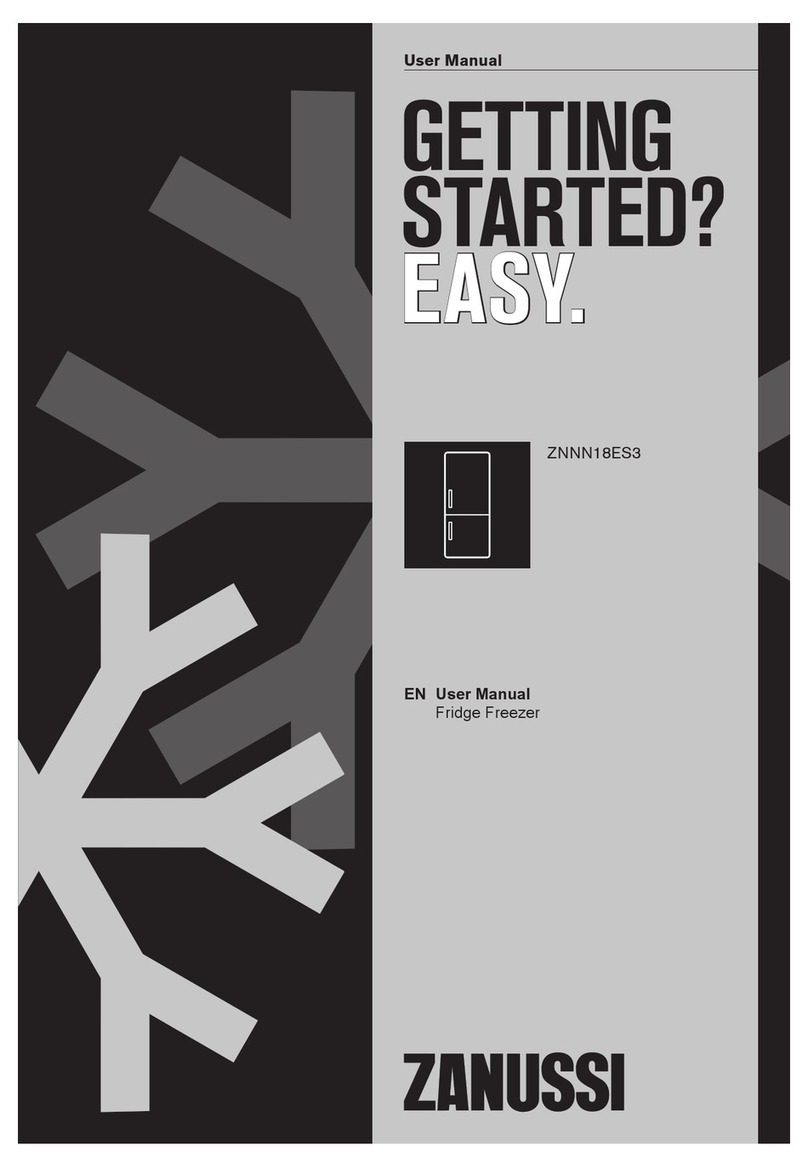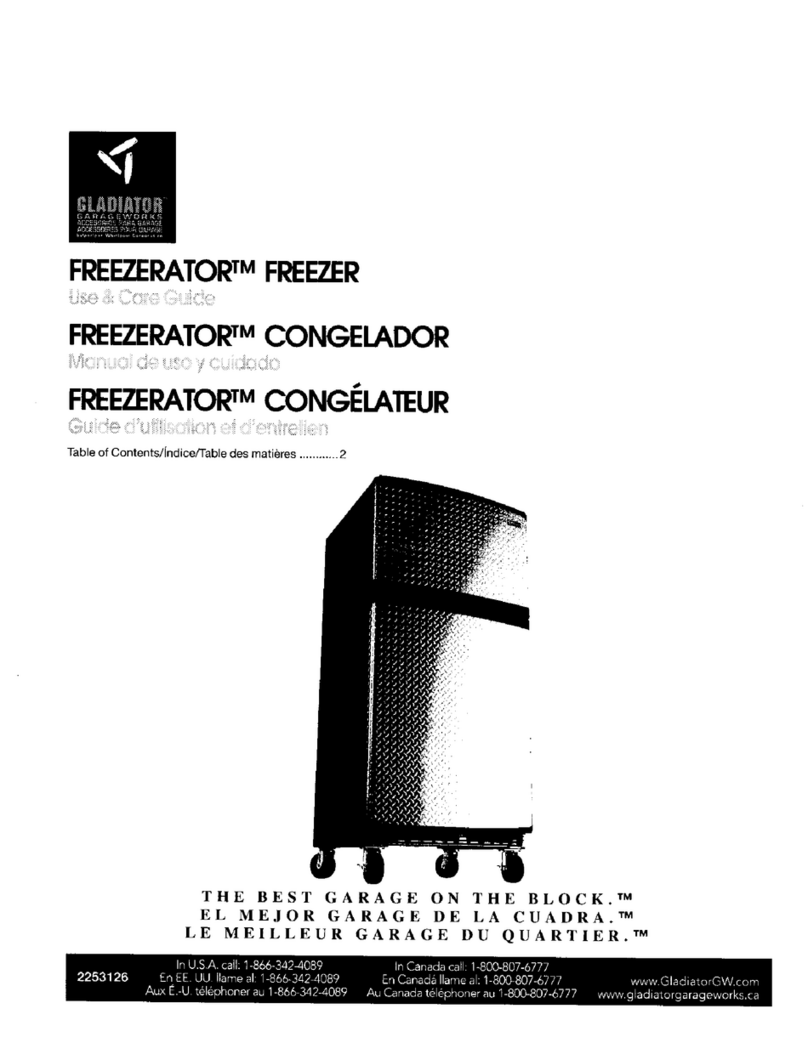PRODIS AR350SS User manual

INSTRUCTIONS FOR USE
CHEST FREEZER
Prodis
.
.


-23-
-22-
21-
19-
18-
-16-
-15-
-13-
-12-
-12-
-11-
-11-
-10-
-09-
-02-
-01-
-
-
-
TABLE OF CONTENTS
Precautions and advice
Installation
Connection to power supply
Switching on/off and temperature selection
Indicator-lights
Warning buzzer
Start-up
Freezing/storage of fresh food
Maximum stacking height
Storage time
Cleaning and maintenance
Defrosting
Resolving faults on your own
Troubleshooting guide (what is when…)
Storage table
Components
Main function index
-15-
-15-

-02-
of the
appliance
only
in
a
place
with
the
Please, use
the
correctly.
purchased a good appliance
this
document
so
that
you
may
consult
it
Underline
any
parts
you
consider
your new appliance.
Please
read these instructions for
use
in future
or pass it
on to
any future
owners.
The
can be negatively influenced. See also
"Climate classes"
on page 3.
attentively to get a good and fast
understanding of
particularly
important
for
you.
Look
after
You have
which
will serve you for many years if
it
is used and maintained
illustration (FIG.) are on the
last pages of
this user manual.
appropriate
ambient
temperatures;
otherwise
the
functioning
PRECAUTIONS AND ADVICE
THIS PRODUCT IS FOR HOUSEHOLD USE ONLY!
Please read these instructions carefully before the first use of this product
and save this manual for your future reference.

-03-
dispose of it.
latch-make sure that all existing
ave bought your new
excessive use of the appliance, e.g. by
commercial use, the warranty on the
compressor will be reduced
In case of
been tested againstThe appliance has
use,the standards
This appliance is designed for domestic
use. If it is installed for professional or
commercial
Important!
applicable
by 50%.
Should you h
This will ensure that a child cannot get
trapped inside.
to the respective trade must be observed.
leakage in compliance with the relevant
legal safety standards .
fridge
/
freezer to replace an old appliance,
please
or bolt-locks on the old appliance are
destroyed, before you

-04-
in household and similar applications
such as:
This appliance is intended to be used
affixed to the
appliance.plate
leak
out. Details of the
utilised refrigerant
and insulation propellant are on the rating
does notrefrigerant
transportation to the
appliance, is not
especially the heat exchanger
Make
sure that the
or with your
special equipment.
refrigerant and this
protection,environmental
Please have the old appliance
.
ecologically disposed
of by a company
specialised in
since the appliance may contain harmful
components in the
must be removed with
Please
check with your dealer
local
authority.
refrigerating system
containing the
refrigerant,
at the back of the
damaged
during
disposal
or collection site, so that you
can be sure that the

-05-
appliances inside the food storage
WARNING: Do not use electrical
residential type environments;
– by clients in hotels, motels and other
and other working environments;
– staff kitchen areas in shops, offices
.
s or other
a
ppliance,unless
– bed and breakfast type environments.
– farm houses;
WARNING: Keep ventilation openings,in
the appliance enclosure or in the built-in
structure,clear of obstruction.
WARNING: Do not use mechanical device
process,other than those recommended by
the manufacturer.
WARNING: Do not damage the refrigerant
circuit.
appliances inside the food storage
compartments of the
they are of the type recommended by the
manufacturer.
means to accelerate the defrosting.

-06-
•Whenever cleaning or defrosting,
remove
the power plug.
•After closing the freezer lid, do not open
it immediately and do not force it open
under any circumstances. Any vacuum
remaining on the seal(b) is released after
about 1 or 2 minutes, so that the lid can
be opened normaly once again.
•
To prevent condensation and ice forming,
al
low cooked food to cool down to ambient
temperature before closing the lid of the
dish and before storage.
•Leave the freezer lid open as briefly as
possible to avoid waste of energy and to
prevent an excessive amount of ice
forming
in the appliance.
•Ice forming in the appliance.
•If the red indicator-light goes on
unexpectedly or stays on for a long
period, do not open the lid on any account
and take the appropriate measures
immediately (see guide “what is when ....”
at the back of the this user manual).

-07-
snosrepdnaevobadnasraey8morf
aged
by children
interior walls are very delicate and wil not
tolerate any sharp edges. Use only plastic
or wooden scrapers.
•If the supply cord is damaged, it must
be replaced by the manufacturer, its
service agent or similarly qualified
persons to avoid a hazard.
This appliance can be used
D t d i th t l•o no use a screw r ver or o er me a
objects to remove the layer of ice. The
•
children
maintenance shall not be made
and user
with the appliance.Cleaning
shallnot play
the hazards involved.Children
understand
the appliance in a safe way and
of
supervision orinstruction concerning use
knowledge if they have been given
capabilities or lack of experience and
without supervision.
with
reduced physical,sensory or mental
•The appliance is not intended to be
operated by means of an external timer or
a separateremote –controlsystem.

-08-
voltage shown on the rating label of.
•
•
This
appliance
has
been
incorporated
with a grounded plug. Please ensure the
wall
outlet
in
your house is well earthed.
•
It
is
recommended
to
check
regularly
the
supply
cord
for
any
sign
of
possible
deterioration,
and
the
appliance
should
not
be
used
if
the
cable is damaged.
•Directions for use
In
the
following,
you
will
find
all
the
important information for the use of
your appliance.
The instructions for use apply to
several models, which is why details
of the information may differ according
to the type of the appliance.
Check that the voltage of the power
supply in your home is the same as the

-09-
INSTALLATION (CHOICE OF POSITION FORINSTALLATION)
Strictly avoid high ambient temperatures and direct sunlight. We advise you to place
your appliance in a cool, well aired, dry room. Installation in the immediate vicinity of
a heat source (heating, oven etc.) is highly inappropriate (increased compressor
performance would be necessary and, as a result, energy consumption would be
considerably higher).
If the installation near a heat source cannot be avoided, a suitable insulation plate
must be fitted between the appliance and the heat source (do not use asbestos), or
the following minimumdistances must be observed:
•from gas or electric cooker 3 cm
•from radiator or oven 5 cm
•from a wall, piece of furniture or another appliance 2 cm
•Never obstruct the ventilation grid
Larger chest freezers are equipped with a ventilation grille (k) located below on one
side. These appliances can be placed directly against a wall or a piece of furniture
but not with the side protected with the ventilation grille.
•Freezers without ventilation grid
Leave sufficient space between the rear of the appliance and the wall to ensure that
outward flow of warm air is able to escape.
The appliance must be placed horizontally and on a leveled base. Only this way can
an impeded circuit of the refrigerant andoptimum function be ensured.
IMPORTANT!
Leave the appliance stand in the final position for at least 2 hours before
switching it on, so that the refrigerant circuit stabilizes and no operating
problems occur.
Before connecting the appliance, make sure that the inner area – especially the
corners – is absolutely dry.
Danger warning

-10-
Depending on its composition, the refrigerant is easily inflammable. The refrigerant
circuit is hermetically sealed
and the density has been subject to repeated tests. An improper intervention can
cause acute fire hazard.
Omit any mechanical influence on the cooling system, especially on the condenser
as far as available. With some appliances the condenser is built into the external wall.
Interventions on the cooling system must be carried out by professional and
authorized personnel only.
IMPORTANT!
Escaping refrigerant can injure your eyes. In the event of eye contact with the
refrigerant, wash your eyes instantly under plenty of running water and call/consult
an eye specialist immediately.
•CLIMATE CLASSES
The appliance, according to its climate category, is meant for use at certain room
temperatures. These temperatures should not be exceeded! The climate category
for your particular appliance is marked on the rating plate. The categories are:
name of climate category suitable room temperatures
SN + 10° Cto + 32°C
N+ 16° Cto +32°C
ST + 16° Cto + 38°C
T + 16° Cto + 43°C
CONNECTION TO POWER SUPPLY
Your appliance must be connected to a power socked with grounded connection,
which is conform to the respective standards and has been installed by an
authorized specialist. Before you connect the plug of the appliance with the
Power socket, make absolutely sure that the voltage (V) on the appliance’s
data-plate corresponds with that of your mains.
If the voltage differs, notify the after-sales-service or your dealer immediately, and do
not on any account connect the Appliance to the mains.

-11-
SWITCHING ON/OFF TEMPERATURE SELECTION(THERMOSTAT) (l)
The temperature control switches the appliance on and off and controls/sets the
cooling temperature.
To prevent temperature being accidentally modified, the control is intentionally
resistant to turning.
To vary the setting, we recommend using a coin or screwdriver.
To switch on: Turn the control (l) to the right adjust temperature to the level you
require, between:
- "1" (slight cooling) and
- "7" (lowest temperature)
To switch off: Turn the control to the left
Temperature settings must be according to:
- Ambient temperature of the appliance
- Quantity of stored foodstuff
-Frequency of opening
We recommend a medium setting. You will soon learn which is the most suitable
setting for your requirements.
INDICATOR-LIGHTS (M,N,O)
If your appliance is equipped with indicator-lights, the following guide explains what
is meant by each light up:
- Green= POWER
The appliance is under current and operating
The greenpower light must always be on when the appliance is connected to the
mains and switched on. It is very important to pay attention to this, because in the
event of a power failure, the red and yellow lights stop operating and do no longer
provide a warning.
- red= ALARM
Interior temperature too high
If the red indicator-light goes on, there may be several reasons for this, namely:

-12-
•First start-up of appliance
•Restart after defrosting
•Filling freezer with fresh food
In these cases it is normal that the red indicator-light goes on. It goes off
automatically when the interior temperature reaches approximately –18°C.
Switch on the FAST FREEZE SWITCH (if equipped with)
(FIG.4). (switch off again not more than 24 hours later or when the red light has gone
off).
Reopen the appliance, if possible, only after the red light has gone off.
If the red control light nevertheless stays on after 12 to 24 hours, there may be
serious problems.
Consult the Troubleshooting guide “ what is when...”
WARNING BUZZER (Acoustic alarm)
If your appliance is supplied with a buzzer, it will sound when the red indicator-light
goes on. The buzzer is silenced automatically when you turn on the FAST
FREEZER SWITCH.
START-UP
1. Fully unpack the appliance.
2. Remove the polystyrene parts in the compressor chamber (if supplied).
3. Remove documents and any accessories from the inside of the appliance.
4. Clean the interior with a mixture of lukewarm water and vinegar, and dry
thoroughly with a cloth.
5. Close the appliance.
6. Insert the plug in the socket
7. Switch on the appliance by turning the temperature control (FIG.4) to the right (For
the time being, turn the controller fully to the right to “7” position).(Green and red
- Yellow = FAST FREEZE SWITCH
lights go on).
8. If equipped with a FAST FREEZE SWITCH, turn it on. (Yellow light goes on
too).

-13-
9. Do not open the appliance any more for about 4 hours respectively as long as the
red light is on, to allow the temperature in the inner compartment to drop to the
necessary level.
10. You can now fill the appliance with any amount of deep frozen food (purchased
ready frozen goods). (Consult the following chapter “Maximum stacking
height”).
11. Turn off the FAST FREEZE SWITCH again after 24 hours at the latest.
12. If you wish to freeze fresh, unfrozen food, go on to the following chapter
“Freezing/storage of fresh food”.
Important!
Do not store any bottles containing liquids. Liquid expands when frozen and the
bottle can explode. Never keep containers with explosive substances (gas lighters,
petrol, ether and the like) in the freezer compartment of the appliance.
When storing ready frozen food, you must observe the manufacturer’s instructions
on the food packaging.
Deep frozen ice-cream and ice Lllies must be eaten only a few minutes after being
taken from the appliance to avoid injury to lips and tongue (danger of skin
detachment). For the same reason, avoid touching the inner walls with wet hands.
We advise you to use defrosted or slightly frozen products within short time. As a
rule, such products are not suitable for re-freezing.
FREEZING/STORAGE OF FRESH FOOD
Almost all fresh products are suitable for freezing and storage in the appliance. For
themost commonof these products, we provide a table with instructions on
acceptable storage times and the most suitable packing material (see “storage table”
at the back of this user manual).
Label the fresh products clearly as they are not easy to identify whendeepfrozen in
transparent freezer-bags. We advise you to use commercially available labels for
frozen foods.

-14-
Pack fresh products in portions suitablefor yourhousehold to prevent defrosting of
quantities that are too largefor consumptionin one day in yourhousehold.
Label the portions with at least the following information:
•Product name (e.g. beef fillet)
•Weight of portion
•Quantity (total of pieces)
• Freezing date
•Use by date (consumption date) (see “storage table”)
Then continue as follows:
a) We recommend you place fresh foods in the fast freezing compartment at the side
(f) (not all models are equipped) or on the bottom of the freezer. This is the coldest
part.
Avoid to put fresh foods directly in contact with deep frozen food. Deep frozen food
could defrost and may not outlast the foreseen storage time.
b) Fill in within 24 hours, only the quantities of fresh food that is suitable for the
freezing capacity of your appliance.
See information on the rating plate (XX kg/24h)
c) If available, switch on the FAST FREEZE SWITCH (FIG.4) (not absolutely
necessary when filling in already frozen (e.g. deep-frozen food) items.
d) After 24 hours, shift deep-frozen goods from the freezer bottom or the pre-freeze
shelf to a hung basket so that the pre-freeze shelf or freezer bottom is available for
freezing additional fresh foods.
e) Turn off the FAST FREEZE SWITCH, the yellow light goes off. Skip this step if the
f) Set the temperature control to one of the appliance’s relevant filling capacities (see
“Maximum stacking height”).
g) Keep the temperature in the storage shelf (d) under control, preferably by placing
a thermometer with a scale range of up to –26°C.
The storage temperature must always be at least -18°C.
appliance is not equipped with the FAST FREEZE SWITCH.

-15-
Refilling of fresh food (not frozen)
Make sure that you refill fresh food, in quantities adequate to the freezing capacity
(XXkg/24h) earliest 24 hours after the previous filling.(do not exceed maximum
stacking height)
MAXIMUM STACKING HEIGHT
To ensure correct storage of frozen food, never fill the storage compartment (d) up to
the edge. Always allow space between the lid and the frozen foods.
Note the stacking marks affixed by the manufacturer (as far as available).
Set the temperature control (l) strictly according to the filling capacity.
To save energy when operating in normal ambient temperature (+18 to + 22°C), we
recommend the following settings for the temperature control:
Capacity Stacking mark Setting pos.
Full upper 12.00 h
Half full medium 10.00 h
1/4 or less lower 08.00 h
STORAGE TIME
The storage time for purchased deep-frozen products varies and depends on the
type of product and its packaging. Therefore, strictly observe the producer’s
instructions on the packaging.
For fresh food that you like to deep freeze, consult the storage table at the back of
this user manual.
CLEANING AND MAINTENANCE
For the upkeep of the external appearance of your appliance, now and again clean
with furniture polish or other enamel protecting product (never, on any account, use
it in the inside. Clean the seal (b) with warm water now and again without using any
cleaning product.
If your appliance has a condenser (p) in the rear inside, from time to time remove dirt
and dust. Dust and dirt impede release of heat from the inner compartment and
considerably increases consumption of energy. For best results, use a light brush or

-16-
duster to remove dust from the condenser on the rear wall.
If you leave your appliance out of use for an extended period (e.g. when on holidays),
leave it open to prevent odors building up inside. For appliances with locks: when the
chest lid is open, always set the lock in “closed” position and keep the key well away
from small children to prevent accidents. After being defrosted, food must be
consumed immediately but latest within the next 24 hours.
When ice and frost layers form on the inner walls up to a certain thickness, they act
as an insulation element and prevent the coldness being released from the inner
walls. They must be removed from time to time.
To remove ice from the inner walls, use a plastic or wood scraper without sharp
edges.
Cover the frozen food with a cloth which aids to collect the scraped ice and enables
a simple removal.
DEFROSTING
Under normal conditions (3 to 4 openings per day) the freezer must be defrosted
once or twice a year (more often in other cases).
Danger warning
Never use electrical appliances to defrost the chest freezer, e.g. hair dryer, fan
heater, or devices with a naked flame (e.g. candles).
Plastic in the inner compartment can melt and escaping gas can be ignited by sparks
or naked flames.
Proceed as follows:
1. Provide a suitable non-metallic container (plastic container or wash-basket).
2. Make absolutely sure that you remove the plug from the power socket.
3. Dry your hands thoroughly to prevent skin damage by contact with ice (it is
advisable to use gloves).
4. Remove all frozen food from the freezer, roll it firmly in newspaper, put it into

-17-
the container, and place the container in a cool, dry room.
5. Cover up the container all around with a thick blanket.
6. Lift the separator (e) (not all models are equipped) upwards out of the guide-rail of
the freezer.
7. Use the divider (so far as provided) as a defrosting dish and push it on the side
under the freezer – where the defrosting water drain-plug is located.
8. Pull the plug (as far as provided) out of the freezer bottom.
9. As previously described, scrape the thickest ice carefully from the freezer inside
and put it into the kitchen sink for defrosting.
10. If necessary, speed up defrosting by placing a large pot of warm (not too hot)
water on the freezer bottom.
11. In freezers not provided with a drain-plug, continuously wipe up the water with a
sponge.
12. Thoroughly clean the inside. Rinse it with a mixture of warm water and vinegar,
thereafter rinse with clear water.
13. Wipe the freezer with an absorbent cloth thoroughly dry and allow to air for about
3 to 4 minutes.
14. Replace the drain-plug (if provided)
15.Empty the dry defrosting water dish (if provided) and slide it as separator into the
guide rails of the freezer.
16. Close the chest and plug it back into the socket.
17.Set the temperature control (l) to maximum setting (green and red lamps go on)
and switch on the FAST FREEZE SWITCH (FIG.4) (if provided) (the yellow lamp
lights additionally).
18. Now refill the frozen food – the oldest items at the top.
To prevent frosted food from defrosting, carry out steps from 1 to 17 within max.
two hours.
19. When the red lamp goes off, reset the temperature control to a as per the filling
capacity suitable storage temperature.
20. Switch off the FAST FREEZER SWITCH (if provided) after about 8 to 12 hours or,
latest after 24 hours (the yellow light goes off).

-18-
RESOLVING FAULTS ON YOUR OWN
High quality manufacturing processes and use of latest cooling and freezing
technology will principally ensure trouble-free function of your appliance.
If you suspect any fault, before contacting the after-sales service directly or via your
dealer, make sure you have observed all instructions and advice in this user manual.
Repairs by the after-sales service, of faults that have occurred because of
non-adherence to the information and advice given in this manual have to be
charged to the customer and are not covered by your dealer’s guarantee.
Attention
The compressor (also known as motor) must not operate continuously.
It is controlled by the thermostat which you set with the temperature control (FIG.4).
It switches on automatically when the set temperature in the storage compartment
exceeds and switches off automatically when the correct temperature is reached
again.
Noise can be heard in every compressor – cooling system when the compressor is
switched on. This noise is produced when the motor in the compressor operates and
also by refrigerant flowing in the cooling system circuit. These noises are normal and
do not indicate any functional trouble
In unheated rooms and in cold weather condition condensation can build up on the
outer walls of the appliance. This does not mean trouble and disappears when the
weather becomes warmer.
Table of contents
